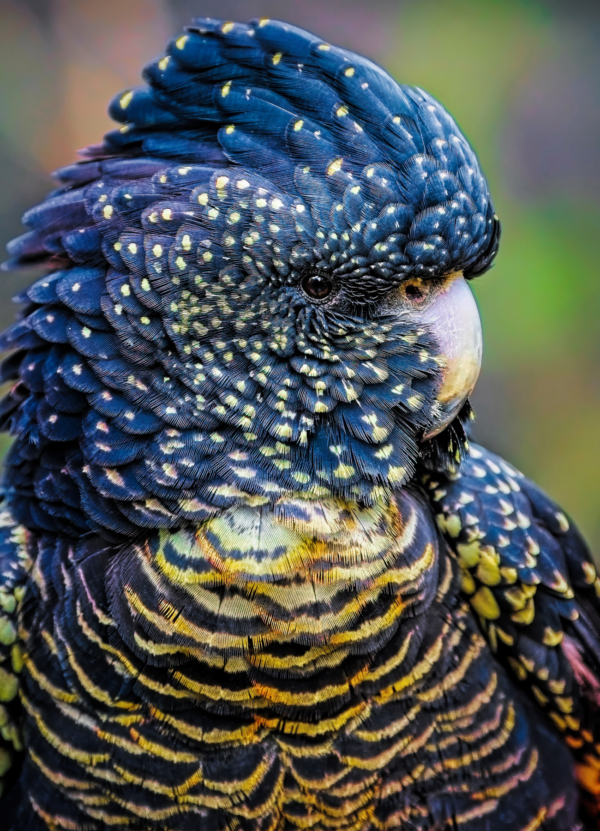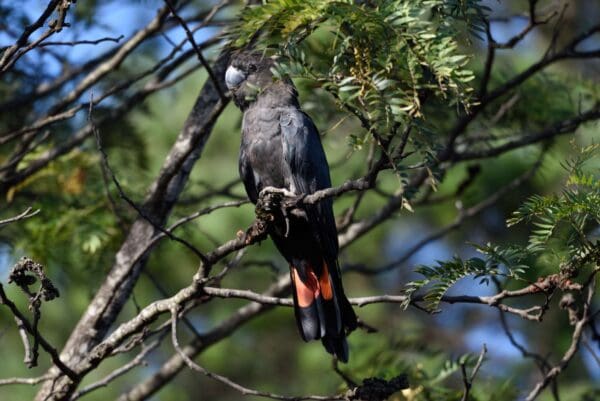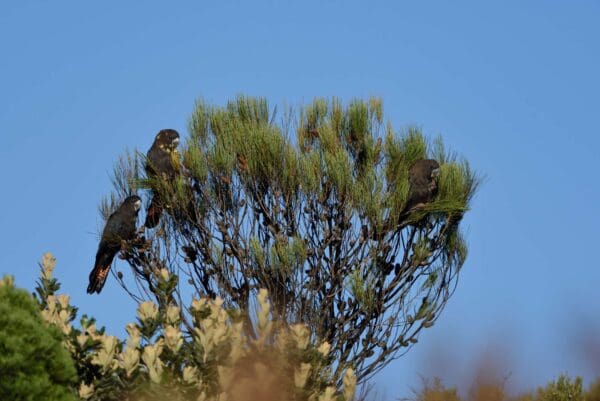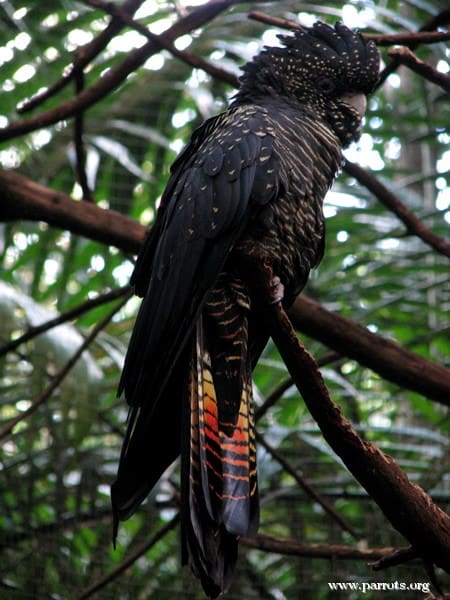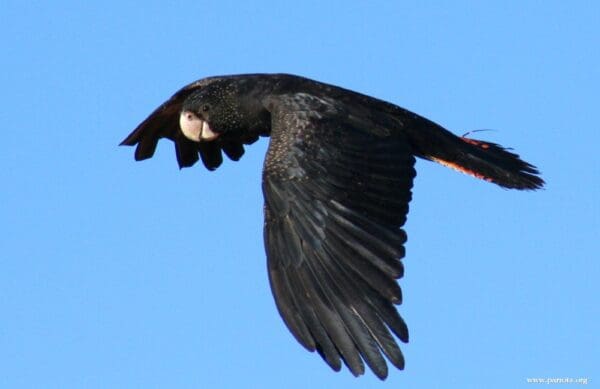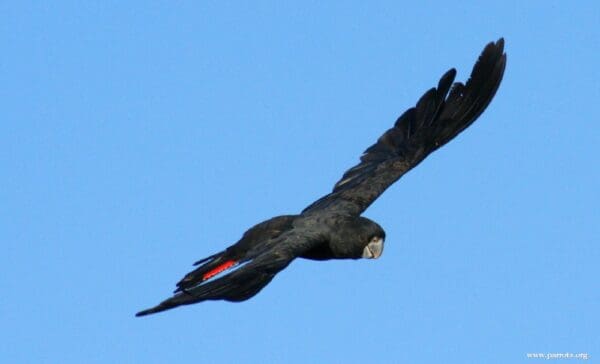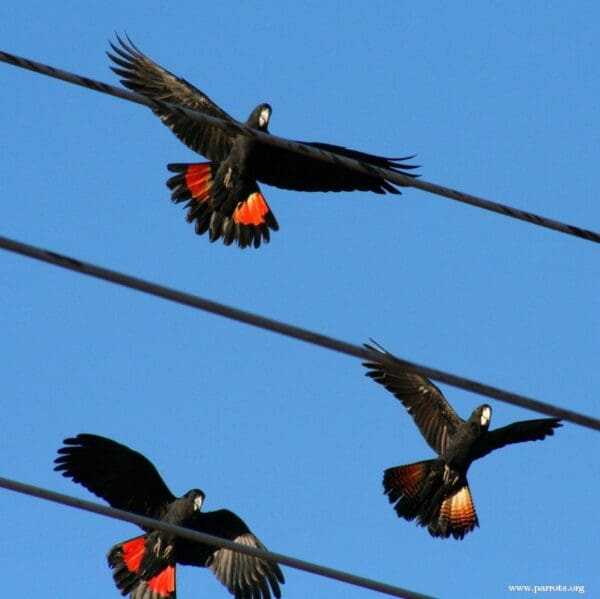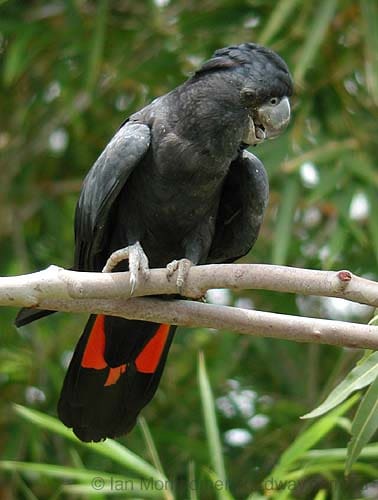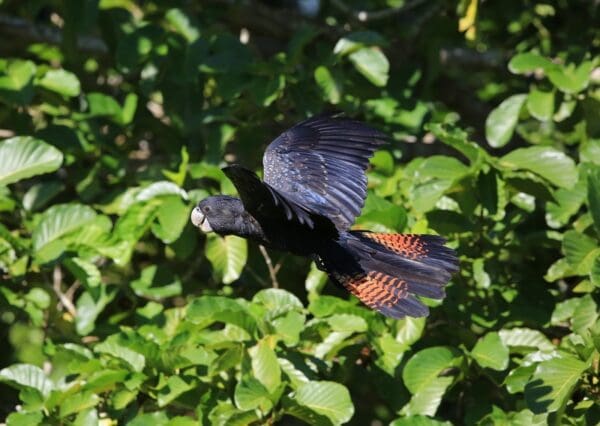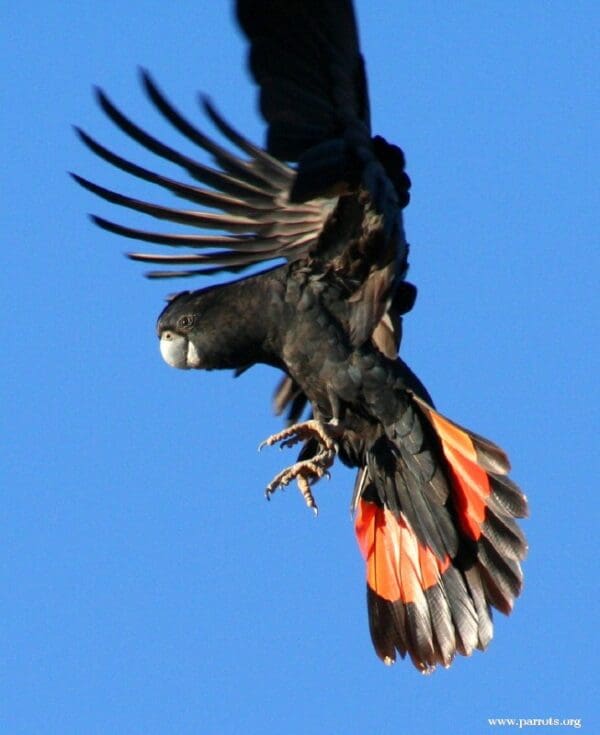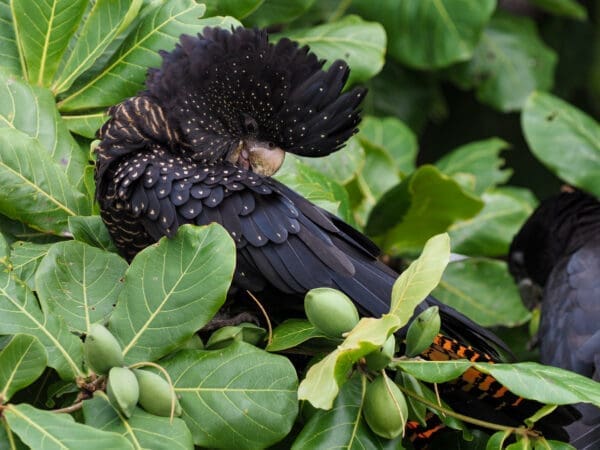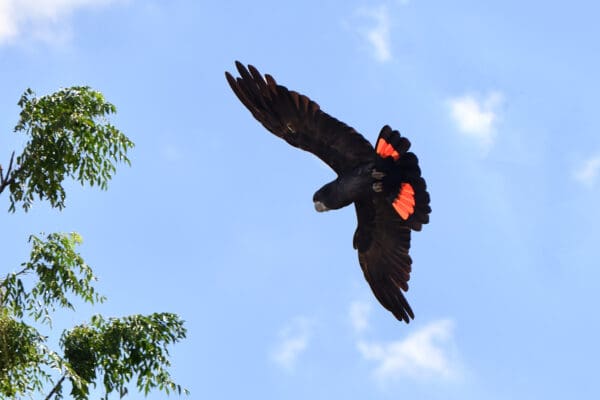Red-tailed Black Cockatoo
Also known as:
Red-tailed Cockatoo, Black Cockatoo, Banksian Cockatoo, Banksian Red-tailed Cockatoo, Bank's Black Cockatoo, Great-billed Cockatoo
Also known as:
Red-tailed Cockatoo, Black Cockatoo, Banksian Cockatoo, Banksian Red-tailed Cockatoo, Bank's Black Cockatoo, Great-billed Cockatoo
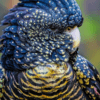

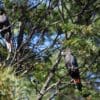
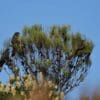
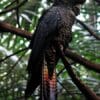
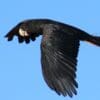
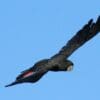
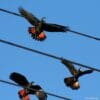
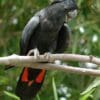
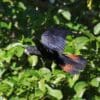
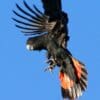
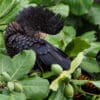
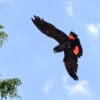

DID YOU KNOW?
There are five subspecies of Red-tailed Black Cockatoo. Some subspecies are more threatened than others.

Calyptorhynchus

banksii
Size:
60 cm (23.4 in)
Weight:
650-900 g (22.7-31.5 oz)
Subspecies including nominate:
five: C.b. banksii, C.b. macrorynchus, C.b. samueli, C.b. naso, C.b. graptogyne
Colour Adult:
C.b. banksii: Male-body black; red band across outside tail feathers. Beak dark grey. Eye dark brown. Female-body brown/black; paler on underparts; head, neck and upper wings dotted yellow; outside tail feathers barred orange/yellow. Beak lighter in colour.
C.b. macrorhynchus: Male-as in banksii but beak broader and heavier. Female-as in banksii but smaller spots on head, neck and upper wing coverts; thinner, paler barring on underparts; barring on tail pale yellow, orange limited or absent. Beak broader and heavier.
C.b. samueli: Both adults as in banksii but smaller in size with smaller beak.
C.b. graptogyne: Male-as in samueli, but notch in upper mandible usually absent. Female-brightly marked with wide pale yellow spots on upper wing coverts and broader pale yellow margins to feathers of underparts.
C.b. naso: Male-as in samueli, but wings longer and pointed; crest smaller. Beak larger and broader. Female-as in male, but more heavily spotted and barred with brighter yellow on underparts.
Colour Juvenile:
C.b. banksii: As in adult female.
C.b. macrorhynchus: As in adult female.
C.b. samueli: As in adults.
C.b. graptogyne: As in adult female.
C.b. naso: As in adult female.
Call:
Noisy calls; in flight metallic sounds with trumpeting tones, also soft growling notes. When alarmed short, sharp note.
More Information:
WPT-supported project – Red-tailed Black Cockatoo Field Research
Content Sources:
CITES
Avibase
BirdLife International
Cornell Lab of Ornithology/Birds of the World
Parrots: A Guide to Parrots of the World, Juniper and Parr, 1998
Parrots of the World, Forshaw and Cooper, 1989. 2010 edition
Parrots of the World, Forshaw, 2006.
Parrots in Aviculture, Low, 1992.
Psittacine Aviculture, Schubot, Clubb and Clubb, 1992.
Captive Status:
Increasing in captivity in Australia; rare outside.
Longevity:
50-100 yrs; C.b. naso – 25-50 yrs.
Housing:
Walk-in enclosure, minimum length 7 m (23 ft).
Diet:
Nuts such as walnuts, almonds, pine nuts; sunflower seed, corn, green leaves and vegetables if accepted, oranges, complete kibble.
Enrichment:
Chewable objects – heat sterilized pine cones, fir, pine, willow or elder branches, vegetable tanned leather toys; different size perches, socialization; bathing.
Nest Box Size:
16″ x 16″ x 36″ (40.6 cm x 40.6 cm x 91.5 cm) vertical open box.
Clutch Size:
1 to 2
Fledging Age:
11-13 weeks
Hatch Weight:
—
Peak Weight:
—
Weaning Weight:
—
World Population:
>100,000 individuals, decreasing.
IUCN Red List Status:
Least Concern
CITES Listing:
Appendix II
Threat Summary:
Subspecies graptogyne severely affected by the loss of Eucalytus camaldulensis for nesting, E. baxteri for food, both of which have been cleared. C.b. naso has a restricted range and is losing breeding hollows to burning so is likely threatened.
Range:
C.b. banksii: NE Australia, including offshore islands, from Gulf of Carpentaria and C Cape York Peninsula, N Queensland, south to SE Queensland and rarely to NE New South Wales.
C.b. macrorhynchus: N Australia from Kimberly division of W Australia east to Gulf of Carpentaria, N Queensland.
C.b. samueli: Coastal and subcoastal mid W Australia; along rivers of central ranges in southern Northern Territory and northern S Australia; Lake Eyre and Bulloo River from SW Queensland to far NE South Australia; along upper to middle reaches of Darling River and its tributaries in W New South Wales.
C.b. graptogyne: SW Victoria and SE South Australia.
C.b. naso: SW Australia north to Darling Range and east to Stirling Ranges.
Habitat:
Found in areas with Eucalypt trees, usually along river systems.
Wild Diet:
Feeds on nuts and fruits of Eucalypts, Terminalia, and Pandanus; also Emex and Erodium burrs and hard seeds. Sometimes takes larvae.
Ecology and Behaviour:
Are nomadic, with movement in the north seasonal. Travels inland with wet season. Southern birds move where food is abundant; large flocks gather where they find a lot of food. Create a large amount of leaf, twig and branch litter beneath trees they have fed at. Found in family groups of three within larger flocks of up to 2000 birds.
Clutch and Egg Size:
1 to 2 elliptical eggs, 51.0 x 36.5 mm. (2 x 1.4 in).
Breeding Season:
March-October in different parts of range. Nest is in large tree hollow.
Related Links:
Birdlife Australia
Kaarakin Black Cockatoo Conservation Centre
Research: Forest specialist species in the urban landscape: Do different levels of urbanization affect the movements of Forest Red-tailed Black Cockatoos?
NSW Government: Red-tailed Black Cockatoo (coastal subspecies banksii) – critically endangered species
